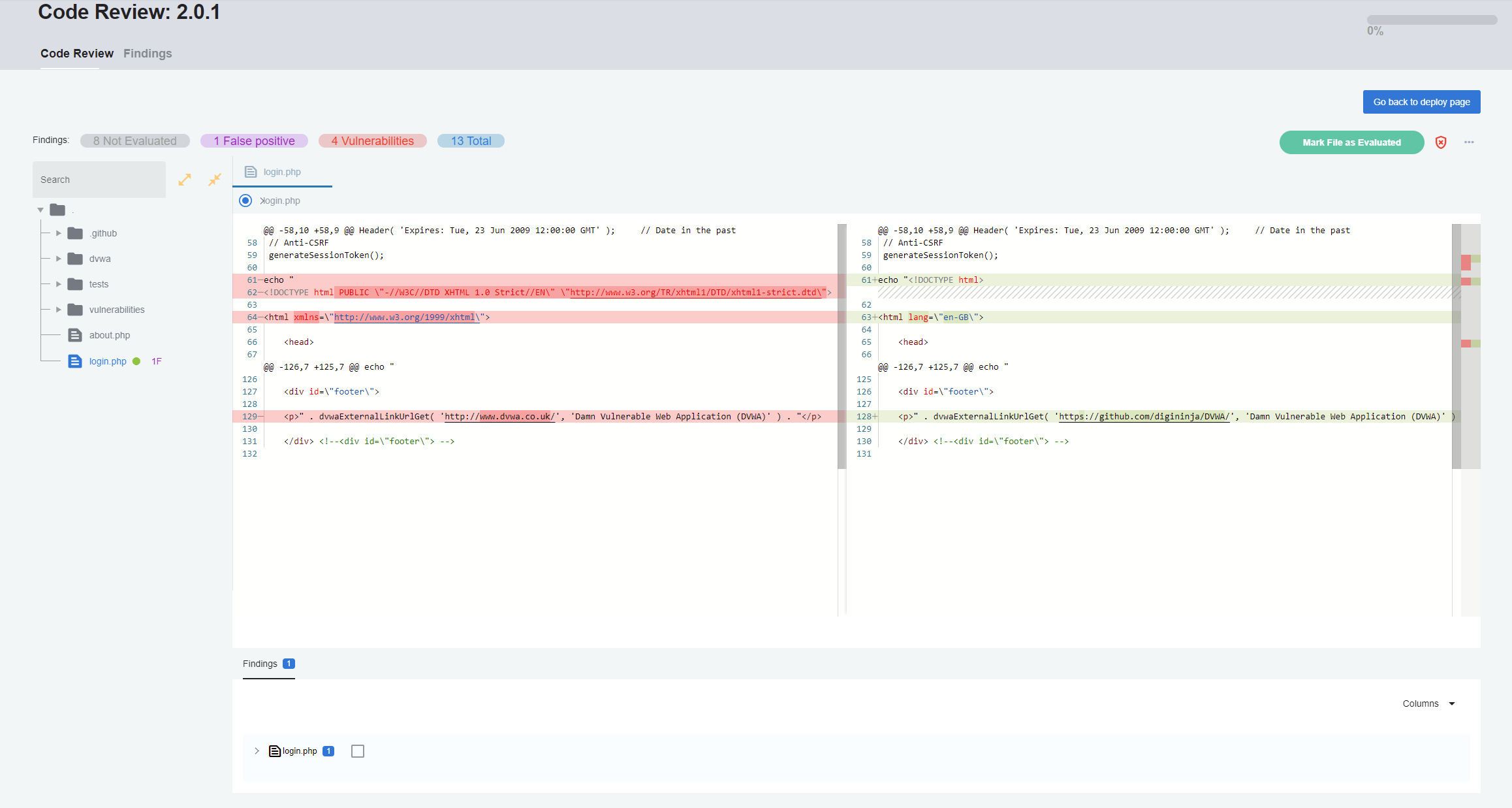Scan projects using the Conviso CLI
Introduction
Protect your code from security threats with our AST (Application Security Testing) using Conviso CLI.
The tool offers both Static Application Security Testing (SAST) and Software Composition Analysis (SCA) tools, which can be accessed through the Conviso Platform.
Usage
To trigger this function is very simple, one of the methods is to export the settings to be used by the CLI to environment variables. Below an example:
export CONVISO_API_KEY='your-api-key'
cd your_source_code_repository
conviso ast run
Or if you prefer to do it in a single command, the instructions below have the same effect:
conviso --api-key 'your-api-key' ast run \
--repository-dir 'your_source_code_repository_path'
Note: You need an API Key. Refer to the following documentation to know how to generate one here.
The identified vulnerabilities will be automatically associated with the Asset in Conviso Platform. Now you can use the Vulnerabilities resource to work on the correction flow.
Available Arguments for Conviso AST
You can customize your Conviso AST scans by using several command-line arguments. Below is a list of the available options:
-
--repository-dir or -r
Specify the source code repository directory.
Use this to point to the local directory containing the source code you wish to scan. -
--current-commit or -c
Specify the commit to be analyzed.
If no value is provided, theHEADcommit of the current branch will be used. -
--previous-commit or -p
Specify the previous commit for comparison.
If no value is provided, the value is retrieved from the latest deploy on the Conviso Platform. -
--company-id
Specify your Company ID on the Conviso Platform.
This option is required if you have access to multiple companies, as it links the scan results to the appropriate company account. -
--asset-name
Assign a custom name to your asset.
This allows you to better organize and identify assets within the Conviso Platform. -
--vulnerability-auto-close
Enable auto-fixing of vulnerabilities.
This option will attempt to automatically close vulnerabilities on the Conviso Platform after the scan is completed.
Naming an asset
When using the Conviso AST, you have the flexibility to assign custom names to your assets on the Conviso Platform. By default, Conviso AST utilizes the repository name as the asset name. However, you may prefer to use a custom name for better organization or clarity.
To set a custom name for your asset, run the command like the following:
conviso ast run --asset-name 'your custom asset name'
This will work on SCA and SAST too:
conviso sca run --asset-name 'your custom asset name'
and
conviso sast run --asset-name 'your custom asset name'
Auto closing vulnerabilities
We've developed an experimental feature for automatically closing vulnerabilities in the Conviso Platform. This functionality is currently in the testing phase. If you're interested in trying it out and providing feedback, here's how you can use it:
conviso ast run --vulnerability-auto-close
This will work on sca and sast too:
conviso sca run --vulnerability-auto-close
and
conviso sast run --vulnerability-auto-close
This will perform the scan as it has always been done and as a last step it will validate with the Conviso Platform if any vulnerability has been fixed.
Deploy, aka code versions
When running the AST scan using the CLI, a Deploy is automatically created and diff code will be sent to Conviso Platform security for later human review.

It is possible to verify if the code added or changed in the commit has known security vulnerabilities and compare it with the original repository.
Note: This feature is essential for performing Security Code Review by the security team. Conviso offers the continuous code review service, see more.
Run scan only with Conviso SAST or SCA
As an additional custom configuration of the Conviso CLI, it’s possible to perform SAST-only in your code using the following command:
export CONVISO_API_KEY='your-api-key'
cd your_source_code_repository
conviso sast run
# or
conviso sca run
The following instructions have the same effect:
cd my_source_code_repository
conviso --api-key 'your-api-key' sast run
# or
conviso --api-key 'your-api-key' sca run
In case of any results, they will be automatically sent to Conviso Platform for assessment.
Support
If you have any questions or need help using Conviso CLI, please don't hesitate to contact our support team.
Resources
By exploring our content you'll find resources to help you understand the benefits of the Conviso CLI:
Securing customers CI/CD pipelines using Conviso CLI: This article brings a presentation of the possibilities of using the Conviso CLI for your CI/CD pipeline.
